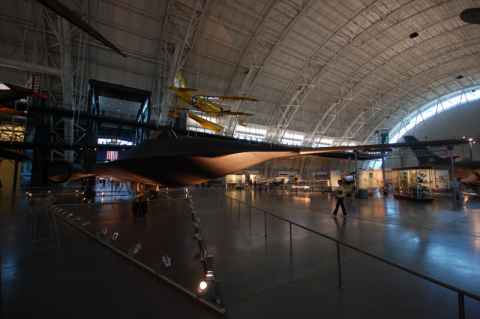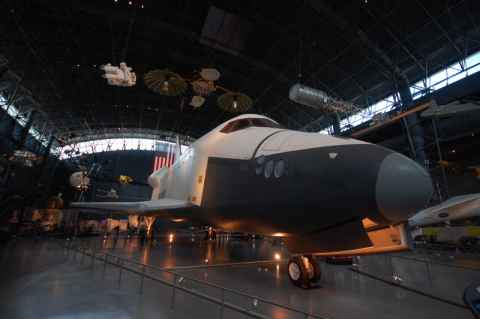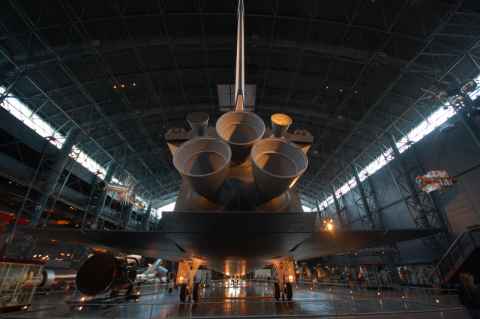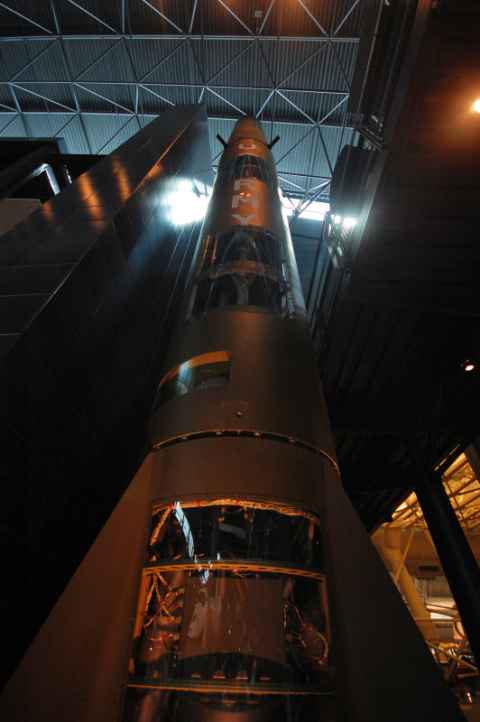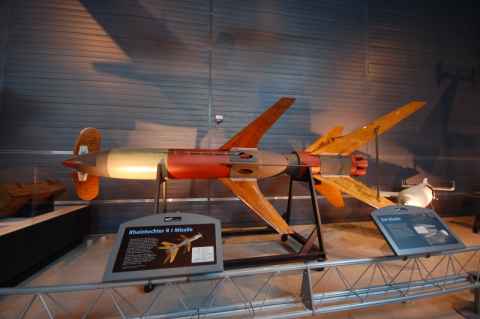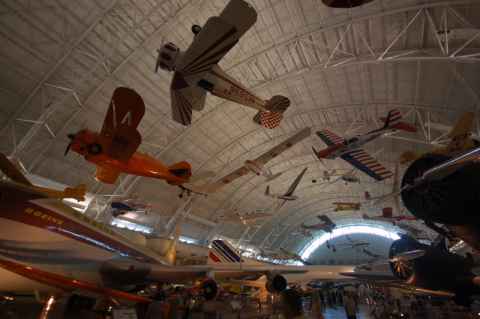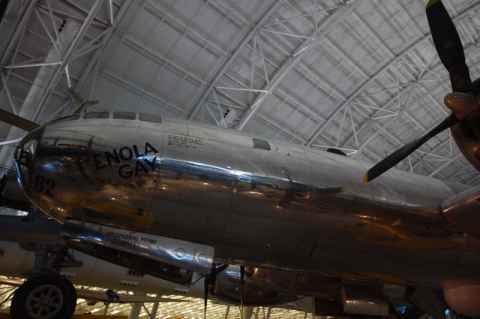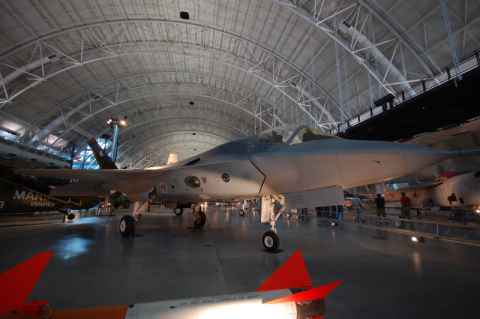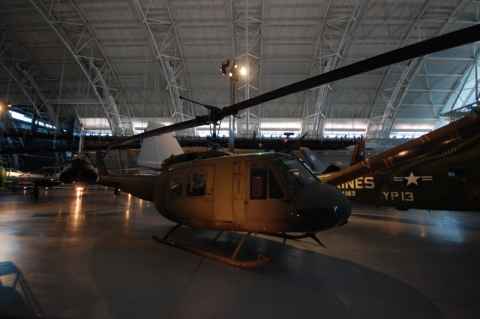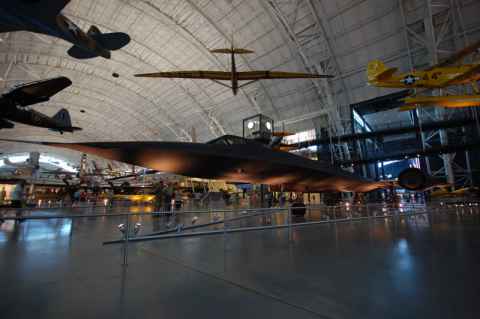
Lockheed SR-71. Note the cones sticking out of the intakes. They are inlet cones[a].
2009-05-15 11:14
Smithsonian Air and Space Museum Udvar-Hazy Center
Chantilly, Virginia
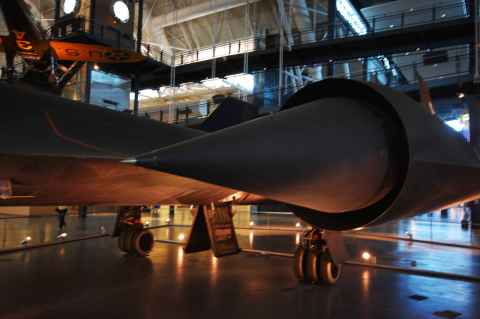
Close up of the left inlet cone. It sets up the first oblique shock, which is conical and emanates from the cone apex.
2009-05-15 11:22
Smithsonian Air and Space Museum Udvar-Hazy Center
Chantilly, Virginia

The rear end of the engine. The nozzle and the ejector flaps convert static pressure to movement and accelerate the exhaust back up to Mach 3+.
2009-05-15 11:26
Smithsonian Air and Space Museum Udvar-Hazy Center
Chantilly, Virginia
